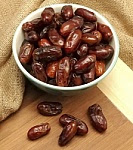First, it is important to note that no wine grapes are harvested in Oman, nor are there any wineries. This is a Moslem country. But for the thirsty tourist, almost all hotels set aside Koranic law for us infidels and offer a wine list where you can get a vastly overpriced (and sometimes heat-cooked) bottle of French, Australian, Chilean or South African wine, or, for about 3 to 6 Omani Rial (at 2.6 US dollars to the OMR) a glass of a varietal called “red wine” or “white wine.” I seem to recall that the English have a term for these varietals, and it is “plonk”.
 |
| daily life in Muscat |
Sadly, I informed my grown sons by email via the 1-rial-an-hour hotel business center computers that since wine was so expensive, I would not be buying any souvenirs, not even the frankincense for which Oman is famous, and would instead devote a ceramic made-to-look-old pot of OMR to the search for a decent glass of wine. This search continues.. but I have great weekend plans for the bar at the Al Bustan, the Ritz Carlton property in Muscat.
Actually, I think the best bet for a local winemaking industry in Oman would be for a date-based wine. Dates are everywhere here, with 35,000 hectares of land planted with date palms throughout the Sultanate, and there are 40-odd varieties grown in the Nizwa region of Oman alone and that’s just one growing area. There is even an historical date-crush process in place. A few hundred years ago when Omani mud-brick walled cities and forts were under siege, the protectors would rush to the date storage rooms, where bags of dates had been laid layer upon layer several meters high on three sides of the room, starting with a platform raised about 18 inches and slightly cantilevered toward the twoinside corners. Date juice would emanate naturally from the weight of the heaped dates, and be collected in ceramic pots strategically placed at those corners.
 |
| Nizwa Fort stairs |
There’s a real opportunity to increase their balance of payments with a date wine industry, I think. Wake up, Your Majesty, the world awaits Omani date wine!
(Note to self, next time buy wine at duty free before getting on the plane to Muscat).






Lovely article, I am frequently in Oman and know of the dearth of a good bottle of wine.
ReplyDelete